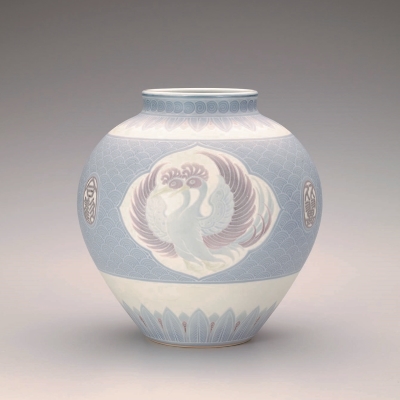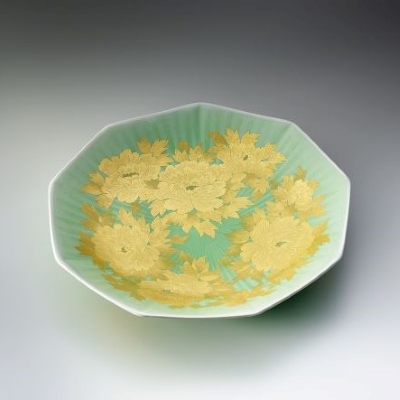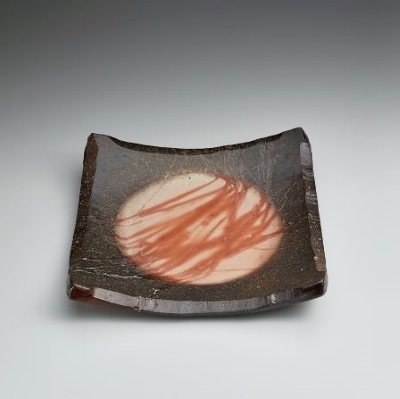Exhibitions
Ceramics of the Past and of the Future: The Timelessness of Traditional Japanese Craft Arts
2022.12.17(Sat) - 2023.01.23(Mon)

Overview
Ceramic art in Japan, through its long history of development in this country, has been considerably enriched and diversified in techniques and expressions through time. The post-World-War period, in particular, saw many creative ceramicists to flourish with their ambitious and exploratory works.
This exhibition celebrates the 50th anniversary of the Japan Kōgei Association’s Ceramic Art Section, showcasing its achievements and elaborations from these productive years. With a total of 137 artists to be presented, this will be a rare opportunity to appreciate, through a comprehensive curation, a variety of ceramic artworks that represent the art’s pathways from the past into the future, sampling masterpieces of prominent ‘Living National Treasures’ from different eras, inspiring works by pioneering ceramicists who cast influential light on the history of Japanese ceramic art, and the latest work of modern artists.
Part I: Establishment of ceramic art in Japan
Works from the eary period of the Japan Kōgei Association’s existence is represented by the excellent work of some ceramicists who expressed the essence of ceramic aesthetics rooted in Japan.
(19 items by 19 artists, including Kaneshige TōYō, Kamoda Shōji, Fujimoto Yoshimichi, Matsui Kōsei, and Miwa Kyūwa)

Large Neriage (Marbled) Jar with Layered Pattern 1979, Matsui Kōsei
Ibaraki Ceramic Art Museum
【Traditional and Artistic Ceramics】
The Nitten (Japanese Fine Arts Exhibition) is another arm of Japanese art community. Some exemplary works present its distinct stream of tradition.
(3 items by 3 artists, namely, Itaya Hazan, Kiyomizu Rokubei VI, and Kusube Yaichi)

Vase with Auspicious Motifs in Hokōsaiji (opaque glaze) c.1914-19, Itaya Hazan
MOA Museum of Art
【Significance of the presence of Living National Treasures (Preservers of Important Intangible Cultural Properties of Japan)】
Masterpieces of four ceramicists are presented, who were designated, in 1955, Japan’s first Living National Treasures in the category of ceramic art.
(5 items by 4 artists, namely, Arakawa Toyozō, Ishiguro Munemaro, Tomimoto Kenkichi, and Hamada Shōji)

Jar with Persimmon Design in Overglaze Enamels 1959, Ishiguro Munemaro
The National Museum of Modern Art, Tokyo

Jar with Landscapes and Characters Design in Underglaze Blue and Four-petaled Floral Motif in Overglaze Enamels, Gold, and Silver 1957, Tomimoto Kenkichi
The National Museum of Modern Art, Tokyo
Part II: Expert techniques and aesthetic quality
This part showcases the diversification of expressions through the elaboration of techniques and pursuit of beauty.
(33 items by 33 artists, including Inoue Manji, Imaizumi Imaemon XIII, Nakajima Hiroshi, and Yoshita Minori)

Ornamental Dish, Peony Motif, Underglaze Gold 2017, Yoshida Minori
The National Museum of Modern Art, Tokyo
【Expressions and their local roots】
Different kilns embody their unique styles that closely reflect their local cultures.
(6 items by 6 artists, namely, Isesaki Jun, Ichino Masahiko, Itō Sekisui V, Tokuda Yasokichi III, Fukushima Zenzō, and Miwa Jusetsu)

Square Dish, Black Bizen Ware 2005, Isesaki Jun
The National Muserum of Modern Art, Tokyo

Neriage (Marbled) Bowl, Mumyōi Ware 1985, Itō Sekisui V
The National Museum of Modern Art, Tokyo

Nakano Moon-white Bowl, Fukushima Zenzō
Ibaraki Ceramic Art Museum
【Chanoyu (Japanese tea culture) in tea bowls】
Tea bowls are an irreplaceable element of Japanese ceramic art, the essential implement of chanoyu through which the depth of Japanese culture may be understood.(6 items by 5 artists, namely, Kato Kōzō, Suzuki Osamu, Tokusawa Moritoshi, Hatano Zenzō, and Raku Jikinyū)

Tea Bowl, Shino Ware 2019, Suzuki Osamu

Black Raku, Tea Bowl, named “Enyū”, Yakinuki Type 2012, Raku Jikinyū
The National Museum of Modern Art, Tokyo
Part III: Japanese ceramic art into the future
Modern ceramicists demonstrate their successful prowess to take traditional skills and techniques to the new height through their contemporary aesthetic sensitivity.(57 items by 57 artists, including Idogawa Yutaka, Imaizumi Imaemon XIV, Suzuki Tetsu, and Maeda Akihiro)

Bowl with Bush Clover Design in Overglaze Enamels, Sekka, Usuzumi, and Sumi-hajiki 2019, Imaizumi Imaemon XIV

White Porcelain Jar 2012, Maeda Akihiro
The National Museum of Modern Art, Tokyo

El Capitan 2021, Miwa Kyūsetsu

Flat Jar, Celadon, named A Vivid Reminder of Water and Sky 2021, Tsugane Hitomu
【Materials and expressions】
Pioneering work introduces new materials into the art, enhanced by the artists’ creativity invested in their unique techniques.
(3 items by 3 artists, namely, Ishibashi Yūshi, Kakurezaki Ryūichi, and Shinnō Iwao)

Wide-mouthed Vase, Bizen Ware 2012, Kakurezaki Ryūichi
The National Museum of Modern Art, Tokyo

Celadon Bowl with Raised Porcelain Linear Design 2011, Shinnō Iwao
【New techniques give shape to the future】
Some artists project the modern world onto their work and open new possibilities for Japanese ceramic art to thrive in the future.(7 items by 7 artists, namely, Isezaki Kōichirō, Shibuya Eiichi, Nakada Hiroshi, Niisato Akio, Mitsuke Masayasu, Murofushi Eiji, and Wada Akira)

Luminescent Vessel 2021, Niisato Akio

White Porcelain Vessel, named Dai / dai, Wada Akira
Ibaraki Ceramic Art Museum
EVENRT INFORMATION
| TITLE | Ceramics of the Past and of the Future+ The Timelessness of Traditional Japaneese Craft Arts |
| EVENT PERIOD | From Sat. December 17, 2022 to Mon. January 23, 2023 |
| VENUE | MOA Museum of Art |
| ORGANIZERS | MOA Museum of Art, the Japan Kôgei Association, and the NHK Enterprises Nagoya Branch |
